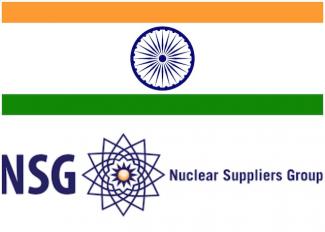India and Nuclear Suppliers’ Group membership
A recent New York Times editorial (India’s Role in the Nuclear Races) has recommended that the issue of India’s entry into the Nuclear Suppliers Group (NSG) be restricted till India “proves itself willing to take a leading role in halting the spread of the world’s most lethal weapons.” The editorial has premised India’s NSG membership upon fulfilling three conditions: Signing the Comprehensive Test Ban Treaty (CTBT), halting production of fissile material and initiating negotiations with China and Pakistan to contain the nuclear arms race. While the editorial rightly champions the cause of ending the nuclear arms race and effecting nuclear disarmament, it has rightly failed while suggesting the means of attaining those goals.
India’s position on nuclear testing was made clear way back in 1955 when Prime Minister Jawaharlal Nehru called for banning all nuclear tests. India has upheld this position in all international forums ever since. Though India refrained from the CTBT in 1996, it has never dissociated itself from the larger objectives of the treaty. Contrarily, India has committed itself towards working for the success of CTBT, which ordains mutually acceptable rights and puts binding obligations for nuclear and non-nuclear weapon states alike. For it to be meaningful, India firmly believes that the CTBT must be premised upon nuclear disarmament and gradual elimination of nuclear weapons in a time-bound frame. India’s sincerity to CTBT was obvious when it accepted the essential obligations of the test ban treaty immediately after the May 1998 tests. India also immediately declared a moratorium on further nuclear tests. Hence, to question India’s obligations to CTBT is not only discriminatory but also reflects apathy or its perseverance towards a nuclear-weapons-free world. The international community must acknowledge that, unlike Pakistan, India has not premised its acceptance of the CTBT obligations upon any prior adherence of another state. India’s declared position on the CTBT is exemplary and must not be ignored.
Just as combatting illicit nuclear trade and ensuring nuclear security cannot be achieved by a single state, halting fissile material production cannot be ensured by India alone. There must be joint regional and global efforts to achieve it. The NYT editorial puts the onus of halting the production of fissile material solely on India while overlooking the expanding nuclear arsenals and increasing capacities of Pakistan and China over those arsenals. Today, Pakistan possesses the “world's fastest-growing nuclear stockpile.” According to the Stockholm International Peace Research Institute 2013 Yearbook, Pakistan possesses around 100 to 110 nuclear weapons. China has approximately 250 nuclear weapons, and its nuclear stockpile is slowly increasing. China also pursues a vigorous modernization program for its nuclear arsenal, increasing its operational capacities. Besides, China has cited strategic constraints for refusing to enter into bilateral nuclear reduction negotiations with the United States and Russia. Under such circumstances, will India’s calls for nuclear reductions then be reciprocated by China? The answer is no. China believes that big powers like the US and Russia will continue issuing nuclear threats as blackmailing, and thus, strategic weapons are an essential safeguard against them.
Pakistan’s nuclear “crown jewels” symbolize the strength of its military, and Islamabad has no plans to renounce them, irrespective of India’s gestures. Sixteen years have passed since the two South Asian neighbors conducted the May 1998 nuclear tests. Yet, Pakistan has not reciprocated India’s no-first-use (NFU) policy to maintain nuclear restraint in the region. The then Prime Minister Vajpayee, in the official paper, Evolution of India’s Nuclear Policy, emphasized India’s “readiness to discuss an NFU agreement [with Pakistan] as also with other countries, bilaterally, or in a collective forum”. Pakistan not only refused this offer, it also continues to harbor a first-use policy based on unofficial redlines.
The editorial’s final suggestion that India must take the lead in initiating talks with Pakistan and China to “end the dangerous regional nuclear weapons arms race” defies all strategic logic. If it is accepted that the nuclear arms race is dangerous, then an equal appeal must be made to Pakistan and China both to observe nuclear weapons’ containment. After all, a race mandates the participation of more than one actor. Pakistan and China must accept appropriate obligations and duties along with India to end the nuclear arms race and enhance prospects for regional nuclear disarmament. India perceives nuclear weapons essentially as political tools that are not meant for war-fighting. However, Pakistan has lowered the nuclear threshold in the region by introducing tactical nuclear weapons. The China-Pakistan clandestine nuclear collusion further escalates nuclear tension and impedes efforts towards nuclear restraint.
On a more realistic level, would Pakistan’s political establishment agree to negotiate with India nuclear restraint without blending it with the Kashmir issue? Will the Pakistan Army allow its government to hold bilateral talks on nuclear disarmament? Will China put aside the vexed border problems with India and respond to the latter’s lead on nuclear containment? Will China prioritise regional nuclear disarmament over its strategic apprehensions vis-a-vis the US and Russia?
The above questions highlight the inherent challenges in an India-initiated trilateral negotiation with Pakistan and China. However, the three nuclear-armed neighbours would display strategic prudence and moderation if they jointly pursued concerted efforts towards enhancing nuclear security by halting fissile material production and gradually effecting nuclear disarmament. One way of ensuring this is to review the existing nuclear confidence-building measures and look for ways to extend them. The three nuclear nations must vigorously push forward the 1988 Rajiv Gandhi Action Plan to realize the goal of nuclear disarmament. It would be a pragmatic approach to undertake a trilateral initiative to examine the factors obstructing the halting of fissile material production in the region. Above all, there must be an NFU policy among India, China and Pakistan.
India’s entry into the NSG must not be premised upon illogical demands. The qualifying edge for India’s NSG membership must be its responsible nuclear behaviour, including its distinguished non-proliferation record, the policy of nuclear restraint, and unflinching commitment to nuclear disarmament.
